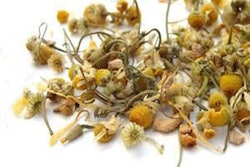In a recent Huffington Post blog, Donna Solomon, a veterinarian at the Animal Medical Center of Chicago, Illinois, USA, says she believes the best pet owners are those that are well-informed about pet care and pet nutrition, so she offers some consumer tips for reading petfood labels.
Solomon says that, according to regulations, if a product name includes a meat, poultry or fish ingredient with no descriptor words after it, like "nugget" or "dinner," that ingredient must represent 95 percent of the petfood's total product weight, not including water, or, the ingredient must represent 70 percent of the product weight if it includes water. For example, a diet labeled as "Lobster and Salmon" must contain a greater weight percentage of lobster than salmon, and the combination of the weight percentage of lobster and salmon in the food must equal 95 percent of the product's total weight, excluding water. Furthermore, the ingredient name label must be written in descending order of percentage of the product's weight. However, she cautions that this regulation does not apply to grains and vegetables, so a diet labeled as "Rice and Lamb" would be mislabeled if it did not contain at least 95 percent lamb.
A product whose name contains the word "dinner" or similar terms on the label implies that at least 25 percent of the named ingredient is included in the diet, but not at a level greater than 95 percent of the diet by weight, not including water. If the "dinner" does include water, then the named ingredient must make up 10 percent of the product's weight. Solomon says that it is important to read the petfood label especially in these cases if your dog has allergies, because the food may also contain other meats or ingredients. If more than one ingredient is named in the "dinner," like "Chicken and Turkey Dinner," both products must again make up at least 25 percent of the product's weight, with the ingredient listed second included at a minimum of greater than 3 percent of the product's weight. Unlike the 95 percent rule, this 3 percent rule applies not only to meats, but also to grains, vegetables, and other ingredients, such as foods "with cheese" or "with blueberries."
Additionally, Solomon says that a "flavor" rule requires a portion of the flavoring ingredient to be included in the diet, which is not specified by a certain percentage, but, rather the rule requires that the food must contain an amount sufficient enough to be detected by a pet. This "flavor" rule is tested with the use of specifically trained dogs that signal specific flavors. She also says that the flavor ingredient is not required to come from the actual product, such as a real chicken, but instead can be a combination of many ingredients that mimic the real taste.














